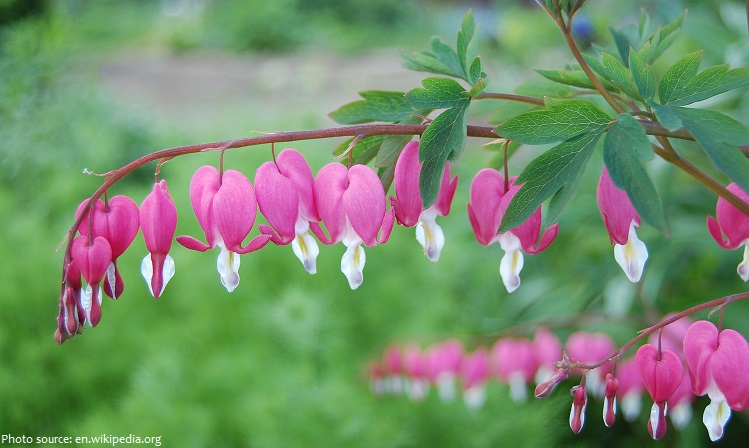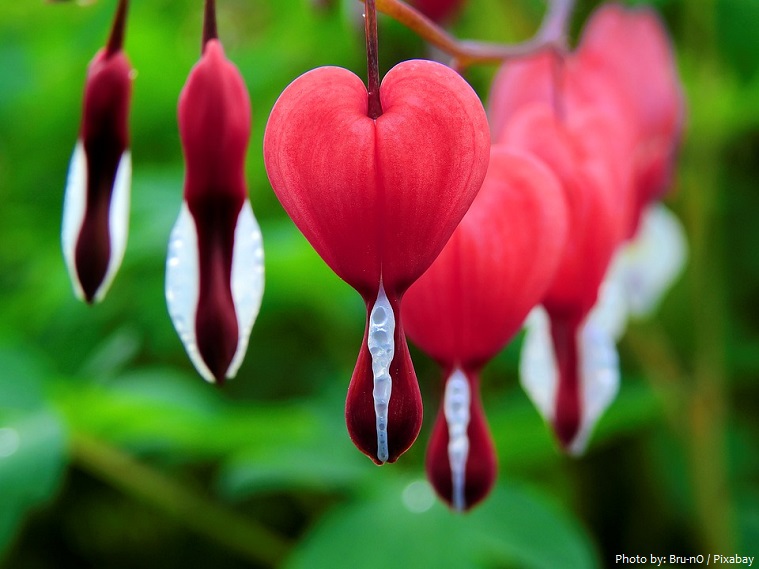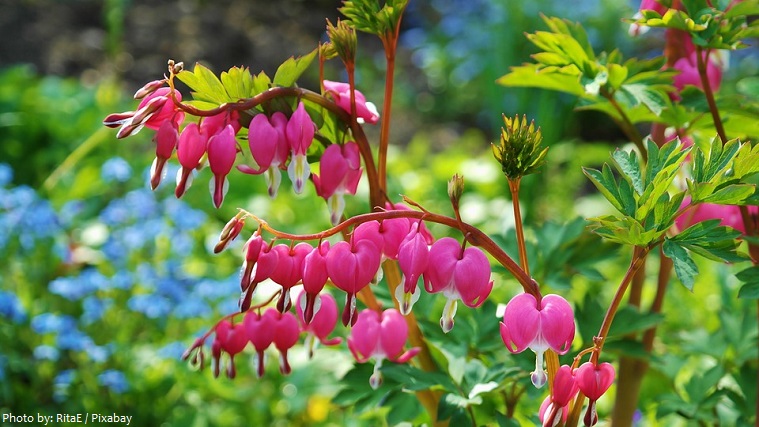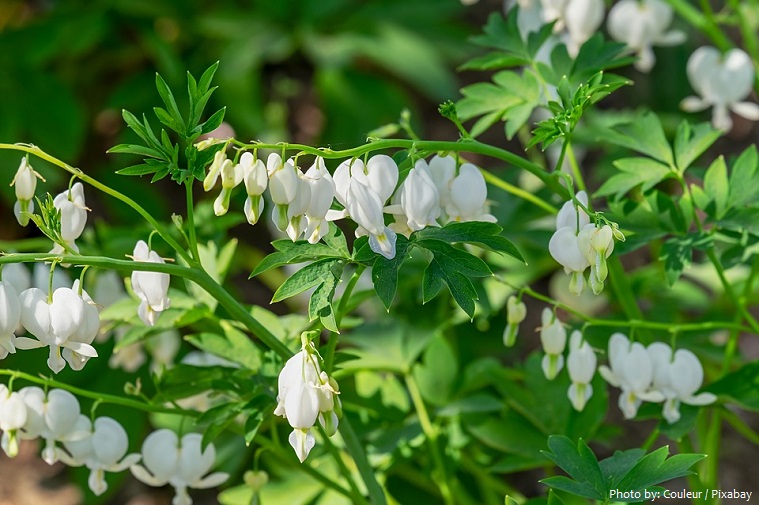Bleeding heart is a species of flowering plant in the poppy family Papaveraceae.
Other common names include “lyre flower” and “lady-in-a-bath.”
It is native to Siberia, northern China, Korea, Japan and North America.
Botanically speaking, bleeding hearts are herbaceous perennials.
Several cultivars have been selected. ‘Alba’ has white flowers, and ‘Gold Heart’, introduced from Hadspen Garden, England, in 1997, has yellow leaves; and the red-and-white cultivar ‘Valentine’ have gained the Royal Horticultural Society’s Award of Garden Merit.
Bleeding hearts need open or partial shade with an evenly moist, slightly acidic soil.
The old garden favorite is the Asian bleeding heart grows to 120 cm (47 in) tall by 45 cm (18 in) wide.
It has 3-lobed compound leaves on fleshy green to pink stems.
The arching horizontal racemes of up to 20 pendent flowers are borne in spring and early summer. The outer petals are bright fuchsia-pink, while the inner ones are white and rarely completely white.
The flowers strikingly resemble the conventional heart shape, with a droplet beneath – hence the common name.
This eye catching flower carries meanings like:
• Feeling compassion and unconditional love for everything in creation
• A connection that goes beyond life and death
• Expressing your emotions openly
• A deep and passionate love between two people
• Spurned or rejected love, especially in the Eastern cultures where the flower originated
• Being too sensitive or emotionally reactive to the world around you
The rarer white bleeding heart is considered a symbol of purity and innocence instead, especially to represent beautiful young women who died in a tragic way.
Japanese folklore also has a tale about a spurned prince who killed himself by sword when a lovely maiden rejected his gifts, which are all represented by different petals from the flower.
The first specimens were introduced to England from Asia in the 1840s by the Scottish botanist and plant hunter Robert Fortune.
All parts of the plants are considered poisonous if ingested.
Contact with the plant can cause skin irritation in some people from isoquinoline-like alkaloids.



